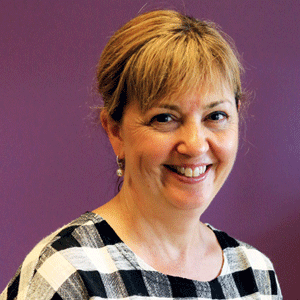THANK YOU FOR SUBSCRIBING

Adopting the 'New Normal' of Higher Education
Professor Mitch Parsell, Academic Executive Director and Tyson Wienker, Director Digital Futures at University of Tasmania


Professor Mitch Parsell, Academic Executive Director and Tyson Wienker, Director Digital Futures at University of Tasmania
Higher Education is undergoing significant, perhaps unprecedented, disruption that will change the landscape of the industry over the long-term. For many in the sector, COVID is seen as accelerating long standing tendencies: perhaps most vividly, a movement away from in-person lectures along with a dramatic rise in online and blended delivery. Further, the increasing use of technology to drive both student learning and deliver organisational efficiencies is influencing strategic discussions on investments, most notably in buildings and IT infrastructure. Whether these changes have been welcomed or otherwise by universities and their staff, it is becoming increasingly apparent that the brakes cannot be applied, let alone the trajectory reversed. We are moving rapidly to a new normal.
The new normal is built on digital foundations, with organisations adopting technological solutions that are both student and staff facing.At the University of Tasmania(UTAS),our move to the new normal has been especially fast in some areas. Our College of Health and Medicine saw the number of online units increase from 6.3 percentof pre-pandemic to 76.4percent in 2021. A specific focus wereareas essential to community health and wellbeing, such as Nursing and Psychology. Success has been underpinned by significant digital investment,and importantly, close coordination between the academic side of house and the CIO’s department. We have found that building effective relationships across these portfoliosmakes decision making more informed and efficient,and supports accelerated sustainable investment.
Sustainable investment is particularly important in the present fiscal environment. Most Australian universities currently facechallenging financial situations due (in part) to a substantial decline in international students. At UTAS, investment in digital capability has demanded adisciplined strategic focus prioritisinga rapid pivot online. It is essential we can demonstrate how any spendwill strengthen both staff capability and our online reach.
The clearest example of this strategic approach is our partnership with Open Universities Australia (OUA).Since December 2019, we have significantly expanded our online footprint with over 450 units offered across more than 80courseson the OUA platform.
This has seen our interstate recruitment dramatically increase, which is set to continue as we expand offerings by at least another 25 percent in 2022. Importantly, with funding assistance from OUA, we have invested over $6.5m over the last 18 months to ensure quality in our online content and systems.
The success of investments such as these has been underpinned by (i) cooperation and clear communication across university departments, (ii) strengthening key software partner relationships, and (iii) streamlining software and architecture for efficiencies and simplification of processes. Two excellent examples of this are our partnership with D2L Brightspace and the employment of Lean Project groups in the process and technology space. D2L provides the University’s Learning Management System (LMS). Effective use of our LMS has increased significantly since the pandemic, with 77.6 percent of our online units receiving a student score of ‘outstanding’ in the technology category at the end of 2020 (a +6.9 percent increase on2019).
Although areas for improvementstill exist, student satisfaction in online learning, supported by tools such as the LMS is high. Key to recent successhas been the creation ofa Digital Futures team. The role of this team is to enhance online content and delivery, drive the University’s learning and teaching digital strategy, and engage with third party technology providers. One clear success has been maturing our relationship with D2L from a customerto a partner in 2020. For example, we are now actively involved with D2L on their development roadmap discussions and long-term strategy. As a result, we decided to significantly extendour contract with D2L, seeing through technology changes and investment that we believe will make a significant difference to our student experience.
The new normal is built on digital foundations, with organisations adopting technological solutions that are both student and staff facing.
Alongside strategic investments, we have had to streamline the number of vendors we engage with and make difficult decisions on what solutions to discontinue. Key to making informed decisions has been the use of the Lean Project methodology across the institution. Lean thinking and process has enabledtechnical investments to be understandable to both our teaching and non-teaching staff.Further, we now have a simpler ecosystem of solutions and, as such,substantially reduced training requirements. Of course, speeding towards the new normal has not been without bumps.
This streamlining has required us toclearly articulate our expectations of teaching staff.As such,we have developed threshold standards for online delivery of units, including the use of consistent templates within our LMS and the standardisation of grading using the LMS’s Gradebook function. At the end of our last semester in 2021, the University had achieved a 96 percent achievement rate. The journey has been challenging with much more to do, however we believe we are on the right (digital) path.
Weekly Brief
I agree We use cookies on this website to enhance your user experience. By clicking any link on this page you are giving your consent for us to set cookies. More info
Read Also













